The post Nepal Saves NPR 3 Bn in Fuel Transport with Cross-border Pipeline! appeared first on Nepali Sansar.
]]>The Himalayan government has saved NPR 3 billion in fuel transport costs in the span of 2 years after the construction of its first fuel pipeline.
The first cross-border fuel pipeline in South Asia connects Motihari of India to Amlekhgunj of Nepal.
The Nepal-India fuel pipeline, which became operational in September 2019, can transport petroleum products at the rate of 294 Klph.
According to the Nepal Oil Corporation (NOC), around 3,500 Kl of diesel is being imported from India daily through the pipeline.
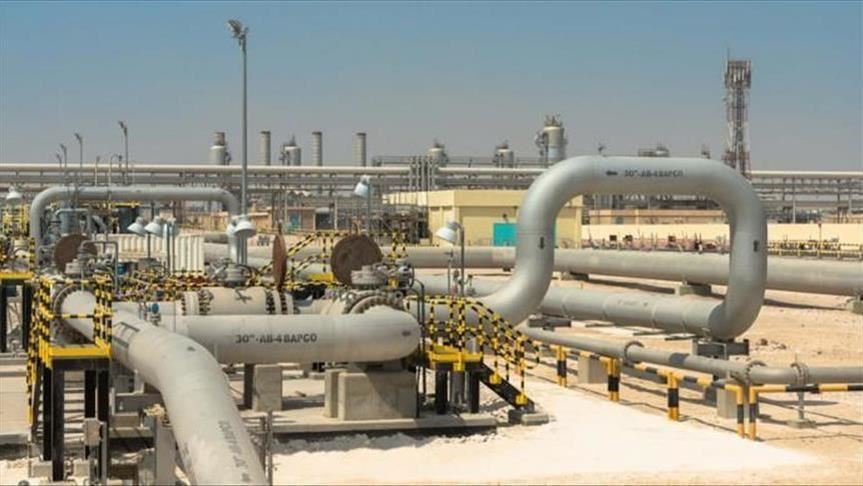
In fiscal years 2019/20 and 2020/21, Nepal imported 1.61 billion liters of diesel by using the pipeline. In just 2 months of the current FY 2021/22, the country imported a total of 124.41 million liters of diesel through the pipeline.
“It costs an average of NPR 45,000 to transport the fuel from the Barauni depot of India to Amlekhgunj of Nepal,” said Pradip Kumar Yadav, chief of Amlekhgunj depot of NOC. “The pipeline has helped cut the costs of fuel tankers apart from reducing technical losses.”
Stay Tuned to NepaliSansar for Latest Nepal Economy News!
More News:
- King Birendra’s Coronation Carriage Now on Display
- Numerous Physicians Join Janata Samajwadi Party
- Tourism Sector Plans to Create Short-term Employment for 1,000 Workers!
- ANFA Supports FIFA’s Proposal for Biennial World Cup!
The post Nepal Saves NPR 3 Bn in Fuel Transport with Cross-border Pipeline! appeared first on Nepali Sansar.
]]>The post Nepal’s Economy To Shrink to 2.1% in FY 2020/21: Warns World Bank appeared first on Nepali Sansar.
]]>Despite the government’s efforts to curb the economic crisis incited by the coronavirus pandemic, the impact on economy and livelihood is expected to be profound in the current fiscal as well.
According to the World Bank’s latest Nepal Development Update, the economic growth rate is estimated to decline to 2.1% in the FY 2020/21.
The fiscal deficit is poised to drop to 6.6% of GDP in the current fiscal, compared to 7.3% in FY 2020.
Moreover, the current account deficit is projected to be at 6.5% of the GDP in the current fiscal, compared to 7.2% in previous fiscal.
The Economic Situation During Current FY 2020-21:
- Economic activity in the tourism sector will remain weak
- Remittances inflows will be moderate
- Industrial and agricultural production will be low due to lasting supply chain disruptions
- Imports will be low and below the pre-pandemic levels due to low economic activity
- Low oil prices
- Limited revenue collection
However, FY 2021 Budget measures, including a revision of customs duties, will support the budget as COVID-19 relief and recovery spending will remain elevated.
The World Bank has exclaimed that the unprecedented economic fallout would worsen food insecurity, poverty and inequity in the country. This, in turn, leads to further revenue shortfalls and fiscal slippages.
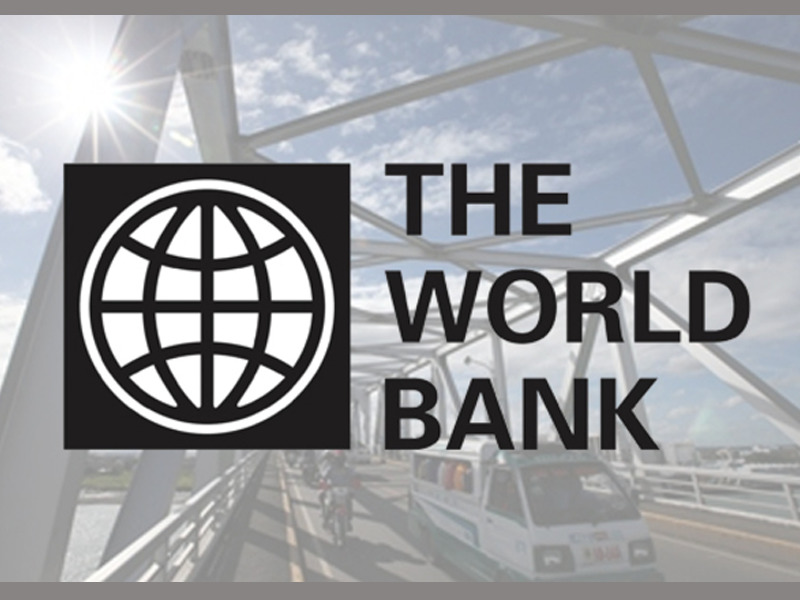
And such a situation could elevate the fiscal deficit to 11.5% of the GDP.
“For a resilient recovery and inclusive growth, economic support measures to firms and workers in the informal sector will be important,” said Dr. Kene Ezemenari, World Bank Senior Economist.
“Incentives to agribusiness-based and forest-based SMEs, with a focus on returnee migrants and youths, could help increase employment and food security. Inclusive growth could be further promoted through entrepreneurship support programs and grants to small and medium enterprises,” she added.
The report also outlined the strategic measures to fortify the healthcare system and improve social protection systems to make them more resilient against future crises.
The World Bank has pressed the importance of improved school sanitation and health protocols such as health screening and water facilities to enable a return to schooling for children.
“We need to address the crisis with a macroeconomic and sectoral policy focused on fiscal sustainability, financial sector stability, a digitally-oriented green economy and resilient public services,” said Finance Minister Dr. Yuba Raj Khatiwada.
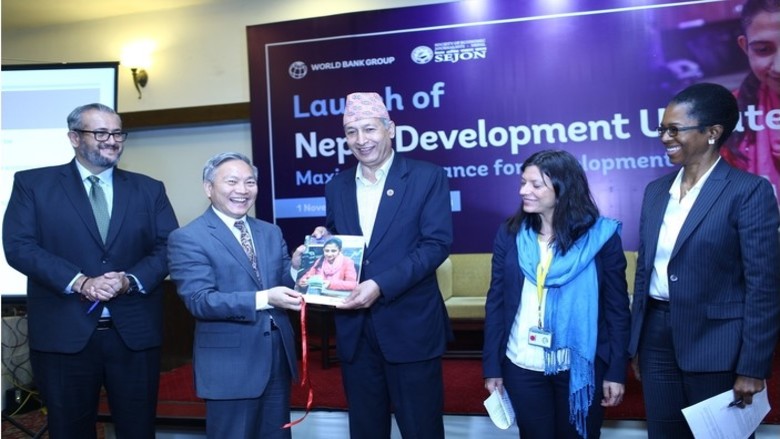
“For Nepal to emerge stronger from the crisis, it is important to adapt quickly to the new reality,” stated Faris Hadad-Zervos, World Bank Country Director.
Stay Tuned to Nepali Sansar for Latest Economic News!
The post Nepal’s Economy To Shrink to 2.1% in FY 2020/21: Warns World Bank appeared first on Nepali Sansar.
]]>The post COVID-19: Another Blow to Nepal’s Economy appeared first on Nepali Sansar.
]]>But it is quite evident that the country can’t shake off the tremors due to the catastrophic impact of coronavirus on the world.
According to the Nepali Finance Minister Yuba Raj Khatiwada, the nation’s economic growth would not meet the target set for the ongoing Fiscal Year 2019-20 due to the COVID-19.
He said that the economic growth will fall to 2% or 1% based on the period of the coronavirus pandemic.
“This is a rough estimation, though. It cannot be exactly said right now as the graphics of the novel virus infection is going up almost every day across the world,” exclaimed Minister Khatiwada.
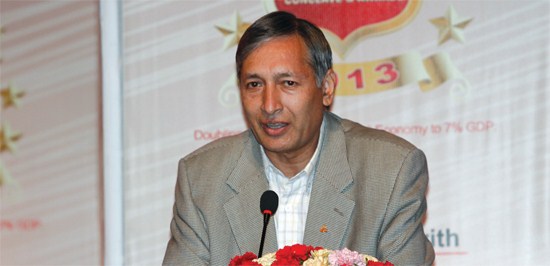
The fall in economic growth is primarily attributed to the fact that the important time for development projects that starts in February is currently reeling under coronavirus lockdown.
[MUST READ: Nepal Launches Coronavirus Website and Mobile App]The coronavirus has already impeded the income from the tourism industry and foreign employment.
The decisions to combat COVID-19 including cancellation of the Visit Nepal 2020 campaign, suspension of the upcoming Everest Expedition and nationwide lockdown have thrown a spanner in the nation’s economic growth.
Earlier, the Nepali Government has set an economic target of 8.5% for the FY 2019-20.
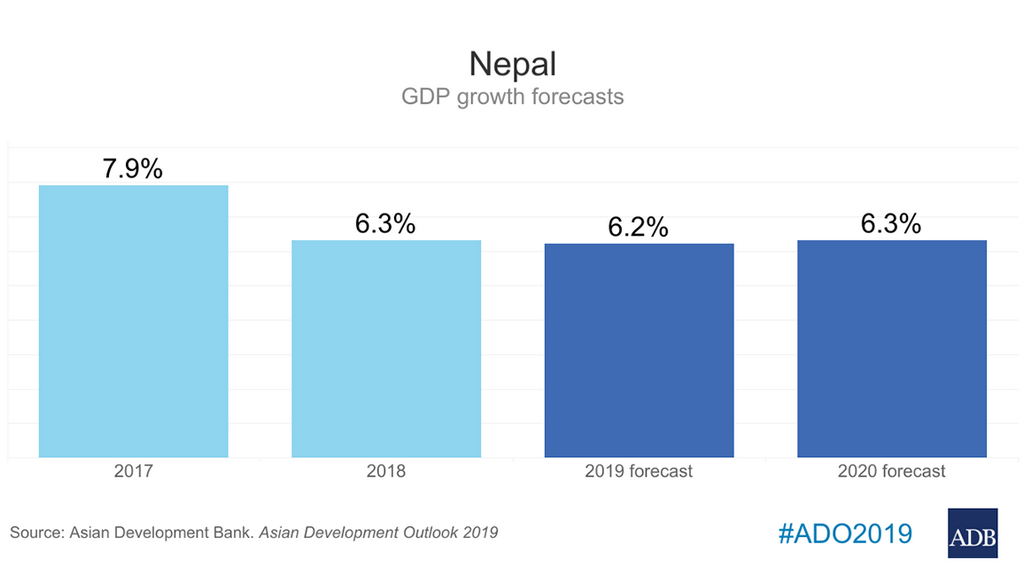
So far, coronavirus has disrupted every economy in the world and has infected 943,730 people while claiming 47,301 lives.
The post COVID-19: Another Blow to Nepal’s Economy appeared first on Nepali Sansar.
]]>The post FY 2018-19: Nepal Sets New Record in Wheat Harvest appeared first on Nepali Sansar.
]]>The Himalayan nation’s wheat harvest is likely to exceed 2 million tons this fiscal year as a result of good weather during winter, said a senior government official.
The all-time high wheat harvest comes in succession to a bountiful paddy harvest last summer.
According to Nepal Agriculture Ministry Chief Statistician Krishna Regmi, this year’s harvest is expected to record a 7 percent increase as a result of good winter rainfall.
The wheat bounty is likely to increase farmer incomes, reduce Nepal’s import bill and cool down inflation.
Moreover, it will further propel the government’s targeted growth rate of 8 percent as Nepal is primarily dependent on farming. The Nepal Government will soon announce crop production estimates for 2018-19.
Nepal Wheat Production 2014-18

Following is Nepal’s wheat output over a period of four years:
- 2014-15 – 1.97 million tons
- 2015-16 – 1.73 million tons
- 2016-17 – 1.84 million tons
- 2017-18 – 1.93 million tons
Last year’s wheat output of 1.93 million tons was the second highest record in Nepal’s history despite a dry winter.
According to Regmi, snowfall was equally helpful in boosting the wheat produce in the hilly and mountains regions, besides the Tarai region.
Additionally, government officials attributed the bumper production to improved varieties of wheat seeds. Nearly 45 percent of Nepal’s wheat fields acreage is covered by improved seeds.
Also, there was no shortage of chemical fertilizers except in a few places this fiscal year, except in a few places, Regmi added. Insufficient soil fertilizers have been a significant cause of low productivity in the past.
Wheat is Nepal’s third most common cereal crop after paddy and maize.
Nepal’s Paddy Harvest 2018-19
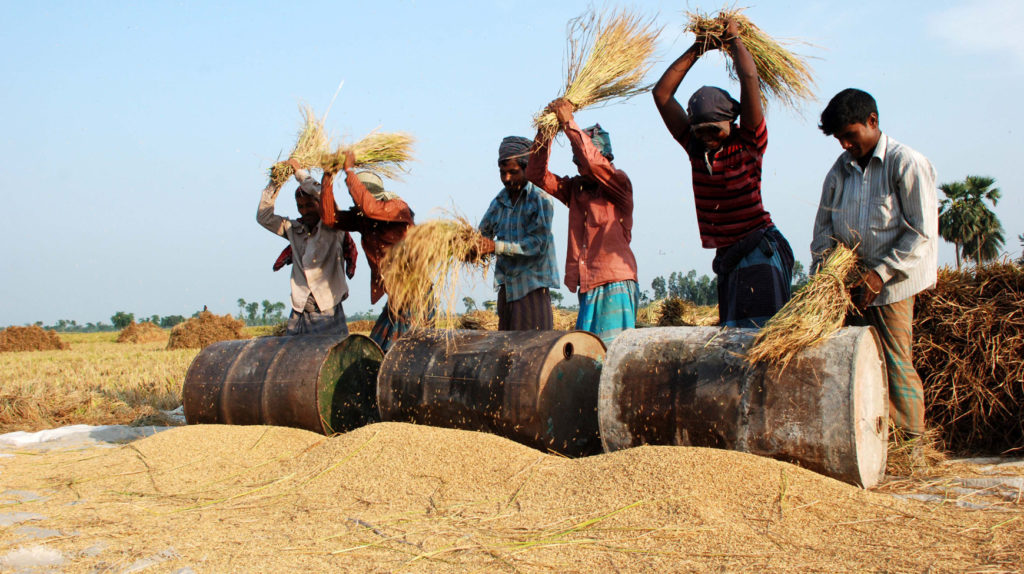
As per Nepal Agriculture Ministry’s preliminary statistics, Nepal’s paddy harvest will likely touch an all-time high of 5.6 million tons this fiscal year. This will mark a 9 percent increase from the previous year.
This high output will be a result of the bountiful rainfall predicted this year. The Ministry’s statistics indicate that Nepal’s paddy productivity will increase to a record high of 3.8 tons per hectare this fiscal year, compared to 3.5 tons last year.
The country’s average productivity is 3 tons per hectare and this year’s paddy harvest is worth more than NPR 115 billion.
Nepal’s agriculture sector has a major contribution in its economy. The high level of wheat harvest is a great boost to Nepal’s economic growth.
The post FY 2018-19: Nepal Sets New Record in Wheat Harvest appeared first on Nepali Sansar.
]]>The post Imports Rise Downsize Nepal’s Forex Earnings in FY 2018-19 appeared first on Nepali Sansar.
]]>This situation prevails despite a decent rise in remittance incomes and facilitation of foreign exchange requirements for Nepalis visiting overseas following the balance of payments crisis.
As per latest reports of the Nepal Rastra Bank (NRB), the country’s foreign exchange reserves stand at USD 9.4 billion as of November 2018, similar to March 2016.
This fall in forex reserves has been continuing since July 2018 due to rise in imports.
According to the Central Bank, the current reserves are sufficient to deal with prospective merchandise imports of 9.2 months and merchandise & services imports of 7.9 months.
Outflow of reserves exceeded the inflows to the Central Bank during the first four months of the fiscal, NRB added.
The outflow surpassed inflows by NPR 57.3 billion during the period, resulting in a balance of payments deficit of Rs 57.3 billion between mid-July and mid-November.
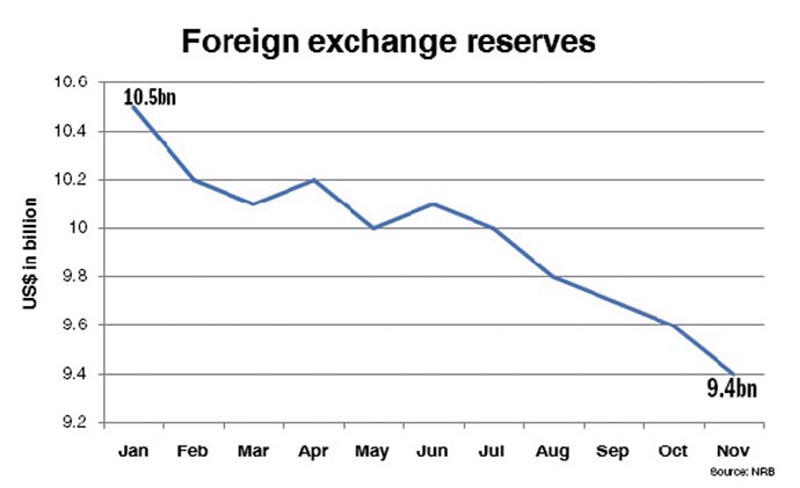
This situation was observed despite 36.4 percent rise in remittance inflows (around NPR 312.3 billion), which got affected by a 35.8 percent rise in imports during the period.
Major concern here was the mismatch in trade during the period. While imports saw an 18.1 percent high, year-on-year, exports grew by a modest 11 per cent to NPR 29.3 billion. This eventually widened the country’s trade deficit by 37.8 per cent.
On the other side, while Nepalis spent NPR 34.9 billion overseas, the country received only NPR 25.1 billion in earnings from foreign visitors.
Foreign Direct Investment is another important factor that fell from 51.3 per cent to Rs 4.9 billion in the first four months of current fiscal, contributing to overall forex decline.
The post Imports Rise Downsize Nepal’s Forex Earnings in FY 2018-19 appeared first on Nepali Sansar.
]]>The post Rising Imports Cause Trade Deficit to Nepal appeared first on Nepali Sansar.
]]>As the latest reports say, the country’s trade deficit widened 40.3 percent in the first four months of the current fiscal year, majorly attributed to the rise of imports by the agriculture and fuel goods.
According to Nepal Trade Export Promotion Council, the trade deficit was measured at NPR 454.47 billion as of mid-November 2018, with exports of tariff-targeted goods balancing the trade.
While the import bill is soaring at NPR 483.75 billion, showing a 38.1 percent rise over the previous record, the export earnings showed a little rise of 10.6 percent up to NPR 29.28 billion.
Overall, the export-to-import earning ratio shows exports standing at NPR 1 /- against import expenses of NPR 16.5/-.
Over dependence on imported goods, as a result of challenges in production and supply, resulted in this widening trade deficit, says Suyash Khanal, Deputy Executive Director, TEPC.
“Although exports of yarn, carpet, iron products, tea and textile are getting better, they are not enough to balance the ever-increasing trade deficit,” Suyash adds.
Fuel, the Biggest Contributor to Deficit
Fuel stands out to be the biggest contributor the trade deficit. Nepal’s petroleum product imports in the first four months of the current fiscal amounted to NPR 69.07 billion in revenues, showing a rise over 68.2 percent, year-on-year.

Iron & related products are second in the list accounting to NPR 58.2 billion worth imports during the four-month period, up 62 percent Y-o-Y, majorly due to high infrastructure & reconstruction activity across the nation, adds Khanal.
Nepal’s agricultural imports are next in the list growing in costlier. According to TEPC, the share of agro & petroleum imports was 30 percent of the total import bill during the review period of the current fiscal.
Export Earnings
Yarn exports witnessed a new high of 19 percent to NPR 2.93 billion during the first four months of the fiscal year, with around 13 percent contribution to the export basket. Woolen carpet exports also increased 17.9 percent to result in NPR 2.76 billion earnings.

Readymade garment is another area that contributed to export earnings with 12.1 percent rise to NPR 2.40 billion in revenue.
Import aside, iron & related products also contributed to exports by showing a 47 percent rise to NPR 2.21 billion.
According to Khanal, Nepal needs to make strategies for promotion of its products in the international market for good incomes and balanced trade. He reports positive signs in promoting tariff-targeted goods.
“We must diversify our export basket, particularly handmade goods which are in high demand in the overseas market, so that our export shipments increase rapidly,” adds Khanal.
Meanwhile, Posh Raj Pandey, Executive Chairman of the South Asia Watch on Trade, Economics and Environment, noted that the country should start exploring niche markets to expand their export earnings.
“Nepal needs to sign bilateral agreements to promote export of specific goods to the countries where their demand is growing,” Pandey adds.
The post Rising Imports Cause Trade Deficit to Nepal appeared first on Nepali Sansar.
]]>The post Remittances to Nepal On Rise, Other Deficits Continue! appeared first on Nepali Sansar.
]]>The report titled ‘Current Microeconomic and Financial Situation of the Country’ assessed the country’s remittance flows in the first three months of the current fiscal.
According to the report, remittance inflows into Nepal have grown by a record 37.3 percent to
Rs 242.17 billion over the first three months of FY 2018-19.
The remittance growth rate was only 2.6 percent during the corresponding period of the last year.
This growth continues to exist despite a significant decline in the rate of Nepali workers migrating abroad for jobs or any other purpose. This is majorly attributed to stopping of workers to Malaysia, says NRB.
According to the Central Bank, around 58,713 Nepalis left the country for foreign jobs during the three-month period, however, showing a 36.7 percent decline in the overall worker migration rate.
Rise in remittances was majorly attributed to the rise in USD value vis-à-vis Nepali Rupee besides money sent by migrant Nepalis to their local family members for festival celebrations, adds the report.
Despite this positive trend in remittances, the country’s Balance of Payment (BoP) continues to be high at NPR 35.42 billion in the review period compared to BoP surplus of NPR 4.27 billion year-on-year.
According to government reports, rise in imports has impacted key macroeconomic indicators.
On the other side, the current account also saw a deficit of NPR 81.96 billion in the review period, compared to NPR 25.52 billion, year-on-year.
The country has received a capital transfer of NPR 3.55 billion, down from NPR 4.96 billion in the review period, while its Foreign Direct Investment (FDI) has also declined to Rs 1.54 billion from
Rs 6.07 billion in the review period.
Total government expenditure during the review period stands at NPR 170.95 billion, more than from NPR 138.84 billion year-on-year. Capital expenditure went on to NPR 18.78 billion from NPR 11.64 billion, year-on-year.
The recurrent expenditure was at Rs 149.57 billion in the first three months of the FY 2018-19, down from Rs 126.35 billion, year-on-year.
Adding to the concerns, imports have also grown highly despite the government’s announcement to control. Goods and Services imports increased 43.6 percent to Rs 373.59 billion during the review period compared to the year-on-year rise of 17.9 percent. Whereas, the export growth remains low.
Surprisingly, the statistics remain in contrast to the Nepal Government’s claims over improvement in ‘ease of doing business’!
The post Remittances to Nepal On Rise, Other Deficits Continue! appeared first on Nepali Sansar.
]]>The post Provincial Achievements Boost Nepal Economy appeared first on Nepali Sansar.
]]>According to Nepal Rastra Bank’s (NRB) recent study titled Economic Activity in Federal Structure, Province 3 contributed to about 31.6 percent of Nepal’s GDP followed by Province 1 at 17.5 percent and Province 2 at 16.2 percent.
Province 3 also aced the chart in terms of per capita income. According to NRB’s report, Province 3 residents per capita income stands at USD 1,534 followed by Province 4 at USD 1,021 and Province 2 at USD 799.
Interestingly, Province 5 topped the table in terms of ‘access to banking’ with only 3 out of the 109 local units not having access to banking services. Followed by 23 local bodies in Province 7 and 20 in Province 6.
Province 5 has also made significant contribution to the country’s agriculture sector, industrial output and service sector with contributions of 16.9, 10.4 and 11.7 percent, respectively.
The study’s findings were revealed at program in Nepal’s Butwal on September 30, 2018.
Province 2– Avenue for Business & Trade
Creating room for additional growth, Province 2 opened avenues for business & trade when Chief Minister Lal Babu Raut said that the government is committed to creating an ‘investment-friendly’ environment.
“The government is ready to provide investment security to promote business and trade in the province,” he said in a ceremony organized at the Dhanusha Chamber of Commerce & Industry on September 29, 2018.
Province 7 Named ‘Sudurpashchim’
In another interesting update, Province 7 was named Sudurpashchim at a meeting of the Provincial assembly on September 29, 2018. Simultaneously, Godawari was chosen as its provincial capital.
Conclusion:
With so many achievements at the grass-root level, Nepal is bound to make progress at the international level. It is noteworthy that this progress is happening at a much faster rate and with mutual co-operation from the government, people and key stakeholders.
The post Provincial Achievements Boost Nepal Economy appeared first on Nepali Sansar.
]]>The post Nepal Tourism Vs Exports: FY 2017-18 Review appeared first on Nepali Sansar.
]]>The earnings from Nepal’s tourism sector touched USD 643 million in FY 2017-18 to give Nepal’s exports earnings a ‘stiff competition’.
According to Nepal Rastra Bank (NRB), the tourism sector’s earnings are close to reaching the country’s export earnings which was USD 721 million, during the review period.
Nepal’s Tourism Industry:
As per NRB’s annual report on Nepal’s macroeconomic and financial situation, foreign exchange earnings from tourism has been rapidly increasing in the last three years, despite the massive earthquake that struck the Himalayan nation in 2015.
Nepal’s tourism earnings during the last three years as follows:
- 2017-18: USD 643 million
- 2016-17: USD 552 million
- 2015-16: USD 392 million
However, tourism industry members attribute tourists’ spending at hotels and restaurant sectors for the increased earnings, according to data at hand.
“
We are preparing a ‘Tourism Satellite Account’ to determine the exact earning from the sector and the sector’s overall contribution to the national economy,” informed Deepak Raj Joshi, CEO, Nepal Tourism Board.
The upcoming ‘Visit Nepal 2020’ campaign is expected to take the tourism earnings a lot higher.
“Income from the tourism sector will definitely surpass that from export of goods,” said Joshi.
Nepal economists are of the opinion that tourism is growing as a key sector for the country’s foreign exchange earnings.
“We have to work towards increasing the length of stay of tourists in Nepal to improve earnings from the sector,” said Shankar Sharma, Former Vice Chairman, Nepal National Planning Commission.
Adding further he said that we should not forget that the export sector as it helps in creating mass employment.
Nepal’s Export Sector:
Although, when it comes to the country’s exports, Nepal has been struggling with developing its exports industry. This is due to the country’s disadvantageous position of being land-locked with no access to the sea. The supporting infrastructure is also poor.
In 2010, when Nepal formulated its 12th 3-year periodic plan, it had hoped to boost its exports to USD 1 billion by mid-July 2013. However, the figure still remains a dream.
Conclusion:
We hope that the country will work towards developing its exports industry which is still a major stakeholder in Nepal’s development and continue to maintain its tourism industry standards which has immense potential.
Also Read:
The post Nepal Tourism Vs Exports: FY 2017-18 Review appeared first on Nepali Sansar.
]]>The post Monsoon Plays Catalyst, Accelerates Nepal Economy appeared first on Nepali Sansar.
]]>This a good omen for Oli-led Nepal Government that envisages an 8 percent economic growth rate for the coming Fiscal Year 2018-19 (beginning mid-July). Also, this comes as a much-required push for Nepal whose three-trillion economy is very much dependent on the agricultural sector’s 27.6 percent contribution. To meet the expected rate, the government is targeting a current growth rate of 4.5 percent.
What Economists Have to Say?
Economists say, a good monsoon-start tremendously benefits farm output. This is because 55 percent of Nepal’s 3.09 million hectare is arable and is highly dependent on rainfall. It can be also key in arresting inflation, which is currently worrying the Nepal Government and threatening the country at large.
Further, bumper harvest tackles inflation in a way that it creates avenue for supply.
The government should smartly allocate minimum support prices on farm products in case farmers don’t earn enough on surplus supply, say experts.
Economist Keshav Acharya says, “Overall, if the agricultural sector performs well and the local and provincial governments spend their allocated capital, the 8 percent economic growth target is attainable.”
“This year, despite poor capital spending, regular supply of electricity and good industrial relation, helped the country to achieve 6 percent of growth,” he adds.
Agriculture – A Key Influencer
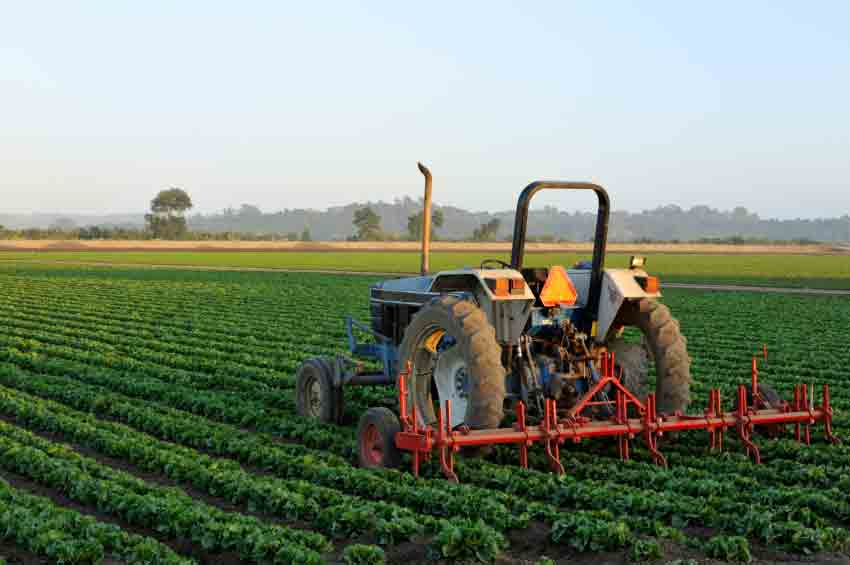 According to Acharya, the agricultural sector growth or productivity is a highly-influencing factor.
According to Acharya, the agricultural sector growth or productivity is a highly-influencing factor.
For example, if the agricultural production increases, it will automatically lead to productivity in the non-agricultural sectors such as industries, tourism, education, hotels, hospitals and retail.
“The increase in agriculture production means farmers’ income will also increase and they will spend more,” says Acharya.
Following which he added that a small growth in agricultural sector can create a ripple effect on other sectors.
Cloudy Sky for Nepal
As per the statement of the 12th session of the South Asian Climate Outlook Forum (SASCOF) released on April 20, 2018, ”Nepal is expected to witness a ‘normal’ monsoon this year.”
“There is a very slim chance of a deficient monsoon this year and based on the forecast, we can expect Nepal’s agriculture sector to get a big boost,” says Rishi Ram Sharma, Director General, Hydrology and Meteorology Department.
Speaking further he adds, “Monsoon has entered Nepal from the eastern part of the country. It is expected to cover the entire country within few days. This is the first time in last 10 years that monsoon has arrived two days before of its schedule.”
Paddy Crop Boost in FY 2016-17
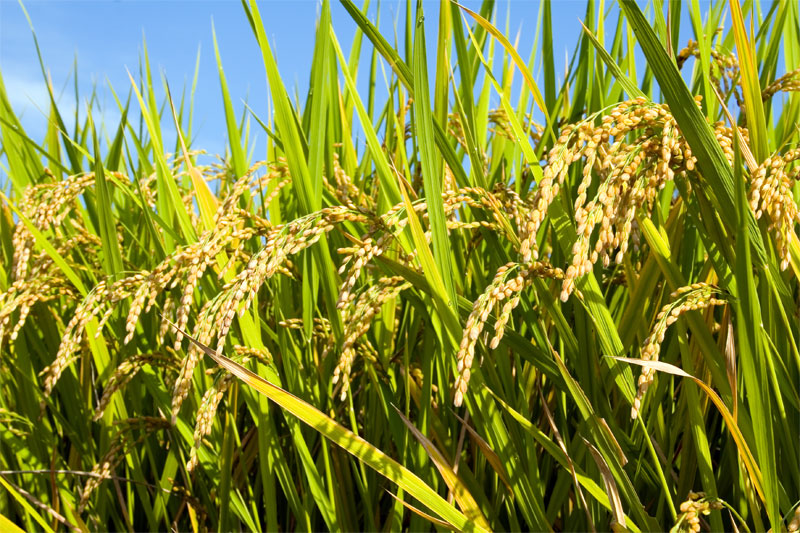 In the last fiscal year, Nepal’s paddy harvest saw an all-time high of 5.23 million tons after the country received above-normal monsoon. The paddy production last year accelerated the agricultural sector’s growth rate by 5.43 percent leading to a higher economic growth rate of 6.9 percent in the past 23 years.
In the last fiscal year, Nepal’s paddy harvest saw an all-time high of 5.23 million tons after the country received above-normal monsoon. The paddy production last year accelerated the agricultural sector’s growth rate by 5.43 percent leading to a higher economic growth rate of 6.9 percent in the past 23 years.
Chitwan Faces Crisis – Traditional Rice Varieties Vanish
Meanwhile, Chitwan District in Province 3 of Nepal is facing crisis over the wipe out of almost 321 varieties of rice except the ‘Anadi’. The district that boasted of a wide variety of rice until three decades ago is now having to depend on hybrid varieties.
According to the Nepal Agricultural Research Council (NARC), the increasing usage of hybrid and Genetically-Modified (GM) rice varieties has beaten the usage of traditional varieties. And, the former scenario is increasingly visible in the Tarai region to hilly areas.
Currently, NARC is conducting research and studying new methods of developing high-yielding varieties of the rice crop that are resistant to climate change and diseases through the usage of traditional variety seeds.
IFAD and Nepal sign MoU Over Food Security
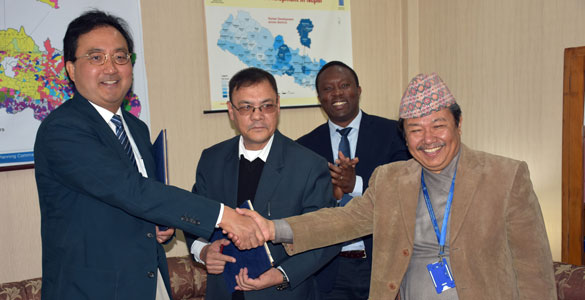 Recently, the International Fund for Agricultural Development (IFAD) and Nepal have come to an understanding to significantly boost incomes and food and nutrition security for 35,000 rural farming households in 10 districts of State 6.
Recently, the International Fund for Agricultural Development (IFAD) and Nepal have come to an understanding to significantly boost incomes and food and nutrition security for 35,000 rural farming households in 10 districts of State 6.
The MoU was signed by Gilbert F Houngbo, President of IFAD and Sreekrishna Nepal, Joint Secretary, Ministry of Finance, Nepal.
With a duration of six years and a budget of USD 68.1 million; inclusive of a USD 38.3 million loan and a USD 1.8 million grant, this initiative will be co-funded by the Swiss Agency for Development and Cooperation (SADC) and the Government of Nepal with a funding of USD 3 million and USD 11.5 million, respectively.
The program will be started in Dailekh, Humla, Jumla, Mugu, Dolpa, Jajarkot, Kalikot, Salyan, Rukum and Surket districts of State 6.
“The scheme will target smallholder producers and landless rural people interested in engaging in targeted value chain activities,” says Lakshmi Moola, IFAD Country Program Manager.
The post Monsoon Plays Catalyst, Accelerates Nepal Economy appeared first on Nepali Sansar.
]]>